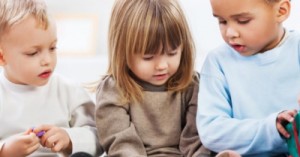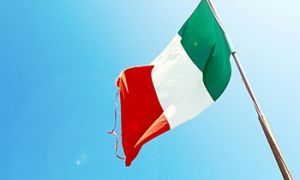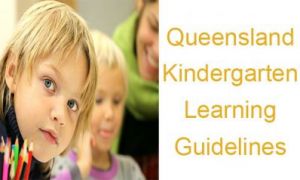Quality Area 1 typically refers to ensuring quality in education and care services, especially in frameworks like Australia's National Quality Standard (NQS). It focuses on educational programs and practice. The following article provides explanations and examples of key terms associated with Quality Area 1.
1. Intentional Teaching
Intentional teaching involves planned, deliberate actions by educators to achieve specific learning outcomes. For example:
- An educator notices that a child enjoys building with blocks. To encourage problem-solving and teamwork, they set up a group activity where children collaboratively design and construct a bridge using blocks. The educator guides the activity by asking questions like, "What shapes might make the bridge strong?" or "How many blocks do you think we need?"
- While reading a book about animals, the educator uses puppets to represent different animals. They ask the children to guess the sounds each puppet makes and then relate those sounds to the corresponding animal in the story, fostering engagement and early literacy skills.
2. Child-Centred
A child-centered approach prioritizes the needs, interests, and strengths of the child. Educators actively listen to children and involve them in decision-making. For example:
- A child shows interest in dinosaurs. The educator incorporates books, art projects, and pretend play about dinosaurs into the program. They might encourage the child to share their knowledge with the class or organize a dinosaur “discovery dig.”
- A group of children show interest in space. The educator creates a “space station” corner with cardboard rocket ships, star maps, and space suits. They also invite children to share their thoughts on what the space station should include and lead the activity based on their ideas.
3. Holistic Approach
Holistic approaches consider the whole child—physical, emotional, social, and cognitive development—rather than focusing on isolated skills. For example:
- An educator designs an outdoor gardening activity where children plant seeds. This encourages physical movement (digging), emotional growth (nurturing plants), social interactions (working together), and cognitive development (understanding the life cycle of plants).
- During storytelling time, the educator includes songs, movements, and visual props. For example, children act out the story of a bird learning to fly. This combines physical activity (flapping their “wings”), emotional development (empathizing with the bird’s struggles), and cognitive skills (understanding the progression of events in the story).
4. Play-Based Learning
Play-based learning uses play as a medium for exploration and understanding. This allows children to develop skills in a fun and engaging way. For example:
- A child pretends to run a café during free play. The educator builds on this by providing materials like pretend money, menus, and costumes. Through this activity, the child practices math (calculating costs), language (taking orders), and social skills (serving “customers”).
- A child enjoys playing with sand. The educator sets up a “construction site” with toy trucks, shovels, and mini building materials. The activity encourages skills like coordination (handling tools), creativity (designing structures), and social interaction (working alongside peers).
5. Reflective Practice
Reflective practice involves educators critically assessing their strategies, interactions, and outcomes to improve and adapt their teaching methods. For example:
- After observing a child struggle with a task, the educator reflects on why the activity was challenging. They might adjust the approach by offering clearer instructions or more hands-on support during future sessions.
- After observing that children struggled to share toys during free play, the educator decides to implement strategies like group discussions on sharing, role-playing scenarios, and introducing cooperative games to promote teamwork and social skills.
6. Critical Thinking
Critical thinking fosters children’s ability to analyze, evaluate, and create solutions.
- During a science experiment, the educator asks children open-ended questions like, "What do you think will happen if we mix these colors together?" or "Why do you think the ice melts faster in warm water?" Encouraging them to hypothesize and test their ideas enhances their analytical skills.
- During a treasure hunt, the educator gives children clues that require logical reasoning. For instance, "The next clue is hidden in a place that rhymes with ‘look.’" This activity supports problem-solving, reasoning, and language development.
7. Learning Outcomes
Learning outcomes guide educators in aligning activities with developmental goals. These outcomes are often tied to frameworks like the Early Years Learning Framework (EYLF).
- A learning outcome might focus on developing communication skills. The educator organizes a storytelling session where children create and narrate their own stories. This supports language development and self-expression.
- If the desired outcome is “developing social skills,” the educator organizes group art projects where children collaborate on creating a mural. They assign roles—like “colour mixers” and “design planners”—to encourage teamwork and communication.
These practices aren’t just about teaching—they’re about connecting with children on a deeper level, making their learning experiences meaningful, enjoyable, and impactful. They ensure every child feels valued and has the opportunity to thrive in a supportive environment.
Further Reading:
How To Achieve Quality Area 1
Intentional Teaching In Early Childhood Settings
Intentional Teaching Strategies For Educators
Child-Centred Approach
Child-Initiated Learning
Holistic Approaches In Early Childhood
Holistic Learning In Early Childhood
Pedagogical Approaches In Early Childhood
The Value of Play-Based Learning In Early Childhood
Reflective Practices In Childcare
Reflection Vs Critical Reflection
Educators Guide To Critical Reflections
EYLF Learning Outcomes Version 2.0







 Here is the list of the EYLF Learning Outcomes that you can use as a guide or reference for your documentation and planning. The EYLF
Here is the list of the EYLF Learning Outcomes that you can use as a guide or reference for your documentation and planning. The EYLF The EYLF is a guide which consists of Principles, Practices and 5 main Learning Outcomes along with each of their sub outcomes, based on identity,
The EYLF is a guide which consists of Principles, Practices and 5 main Learning Outcomes along with each of their sub outcomes, based on identity, This is a guide on How to Write a Learning Story. It provides information on What Is A Learning Story, Writing A Learning Story, Sample
This is a guide on How to Write a Learning Story. It provides information on What Is A Learning Story, Writing A Learning Story, Sample One of the most important types of documentation methods that educators needs to be familiar with are “observations”. Observations are crucial for all early childhood
One of the most important types of documentation methods that educators needs to be familiar with are “observations”. Observations are crucial for all early childhood To support children achieve learning outcomes from the EYLF Framework, the following list gives educators examples of how to promote children's learning in each individual
To support children achieve learning outcomes from the EYLF Framework, the following list gives educators examples of how to promote children's learning in each individual Reflective practice is learning from everyday situations and issues and concerns that arise which form part of our daily routine while working in an early
Reflective practice is learning from everyday situations and issues and concerns that arise which form part of our daily routine while working in an early Within Australia, Programming and Planning is reflected and supported by the Early Years Learning Framework. Educators within early childhood settings, use the EYLF to guide
Within Australia, Programming and Planning is reflected and supported by the Early Years Learning Framework. Educators within early childhood settings, use the EYLF to guide When observing children, it's important that we use a range of different observation methods from running records, learning stories to photographs and work samples. Using
When observing children, it's important that we use a range of different observation methods from running records, learning stories to photographs and work samples. Using This is a guide for educators on what to observe under each sub learning outcome from the EYLF Framework, when a child is engaged in
This is a guide for educators on what to observe under each sub learning outcome from the EYLF Framework, when a child is engaged in The Early Years Learning Framework describes the curriculum as “all the interactions, experiences, activities, routines and events, planned and unplanned, that occur in an environment
The Early Years Learning Framework describes the curriculum as “all the interactions, experiences, activities, routines and events, planned and unplanned, that occur in an environment


